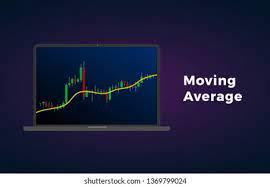Introduction
How to use a moving average to buy stocks? The moving average (MA), a simple technique for technical analysis, averages out price changes as they happen. The standard is computed over a period that the trader specifies; this could be ten days, 20 minutes, 30 weeks, or any other time they think suitable. There are different moving average types to choose from, and using one in trading might be beneficial. Moving intermediate techniques are especially popular because they can be tailored to fit any time frame, making them suitable for both day traders and long-term investors.
Why Use a Moving Average?
A moving average can be used to smooth out data and reduce the appearance of noise on a price chart. The direction of the moving average can be followed as an approximate predictor of the general direction of price movement. Prices are rising (or have recently been) if they are sloped upward and falling if they are slanted downward (or have recently been).
Moving averages can also be used to calculate support and resistance levels. The following chart shows that an upward trend may find support at the 50-day, 100-day, or 200-day moving averages. The average's presence causes this since it serves as a floor from which the price can rebound. It serves as a ceiling when the price drops below the moving average.
Therefore, the price action may occasionally diverge from the moving average. The price may slacken or stop short of it and turn around as it approaches it. In general, an increase in price over the moving average indicates an upward trend. A downward trend is indicated when the price falls below a moving average. But because MAs can vary in length (which will be covered in more detail below), one MA might indicate an upswing while another would indicate a downturn.

What Are The Different Types of Moving Averages?
There are two types of moving averages used in the Indian stock market:
Simple moving average (SMA)
The simple procedure makes calculating the moving average a breeze. It divides the five most recent daily price sums into five equal parts. The cycle creates a new standard each day, and because each one is linked to the one before it, the line of moving averages becomes continuous.
Exponential moving average (EMA)
The exponential moving average can be used to your advantage when deciding whether or not to purchase specific stock. Because they incorporate weights based on market price, these moving averages are computed differently than simple moving averages. This approach gives the most recent closing price more weight than earlier closing prices. When the SMA is additionally shown alongside the EMA, the EMA becomes more accurate and responsive to price changes. This is a result of the high importance placed on recent price information.
How To Use Moving Averages To Buy Stocks?
A trader can utilize moving averages to make simple stock purchases once they have identified the company's overall price trend. Traders can achieve this by using a single moving average displayed on a price chart. After breaking out above the moving average, the stock price is deemed to be going upward.
But when a stock's price falls below the moving average, it denotes a downward trend. Therefore, each trader should create many moving average charts rather than simply one. By constructing numerous satisfying average plots, investors can rapidly determine whether a company is experiencing an upward or downward trend. Investors can utilize moving averages along with their understanding of trend lines to decide whether to buy, sell, or hold a stock.

Conclusion
A moving average streamlines pricing data by reducing its variance and producing a single flowing line. Therefore, the pattern is simpler to spot due to this. Compared to their simpler cousins, exponential moving averages are more responsive to price changes. This might be advantageous in some circumstances, but potentially produce false signals in others. As a result, moving averages with a shorter look-back period (let's say 20 days) will be more susceptible to price changes (200 days).
Moving average crossings are frequently used as entry and exit points for trading. Moving averages (MAs) are another tool that may be used to highlight probable places of support and resistance. Moving averages, despite looking to the contrary, are always determined using historical data and only show the average price for a particular period. Any technique of investing, including the moving average, requires a brokerage account. Start with Investopedia's list of the top brokers to choose the best online broker for your requirements.




